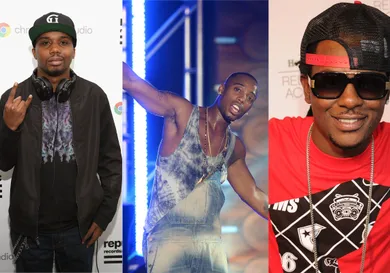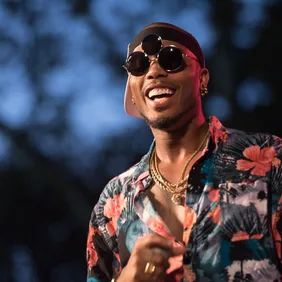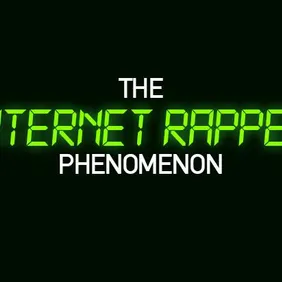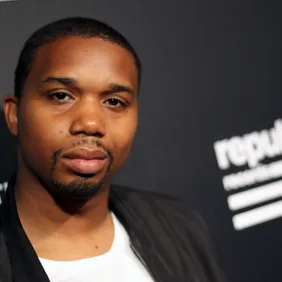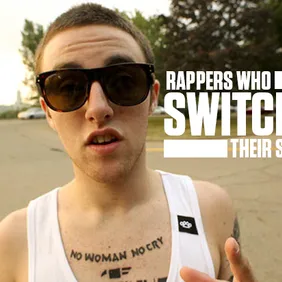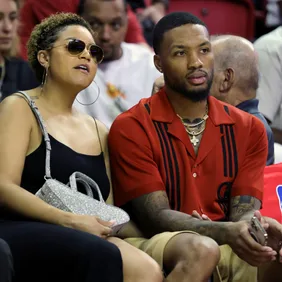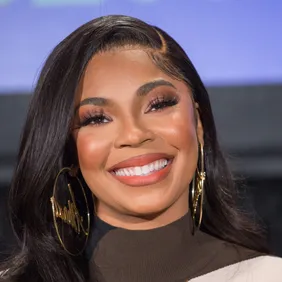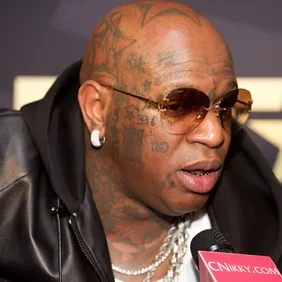You know the names. NahRight. MissInfo. Southern Hospitality. Traps & Trunks. DirtyGloveBastard. These, and so many other websites, became major forces in dictating the hottest rising stars for rap, and how to hear them before anyone else. It was an era lost to a sea of dead Zshare links and long-gone MySpace pages. A few of these rap names (and blogs, for that matter) still remain intact, and have not only lasted past this "blog era" (think 2006-2011) but have even continued to thrive in the present day; scores of others have been entirely forgotten, only to be brought up as idle conversation about "what happened to that guy"?
In fact, we were wondering the same. We've selected 20 names who were more than familiar during the period when rap blogs were at their beginnings, and some might say, peak, and downloadable mixtapes were all the rage. It was a simpler time, when we thought fashion and culture being at the touch of your fingertips wouldn’t be so stressful, and also a brief era where all kinds of routes to rap were acceptable. It was post-Kanye but pre-”Trap” and long before Odd Future would make a point of shaming blogs for not recognizing what artists could do with a self-made buzz. Let’s take a stroll down memory lane for those who remember, and for those who just missed it, here’s some of the names who deserve remembering (and a few we’re glad to forget).
Asher Roth
Asher Roth performing at KLUC Summer Jam in 2009 - Ethan Miller/Getty Images
Who: The unintentional father of "frat rap," Asher Paul Roth was just a chancer who scored the attention of the future manager of Justin Bieber and Ariana Grande, Scooter Braun. With his dopey charm and self-depreciating wit, he scored possibly one of the most bizarre Gangsta Grillz tapes (back when that mattered, again, a sign of the times) with The Greenhouse Effect Vol. 1. By the time his debut single “I Love College” was on radio, he’d already gained a buzz scoring him the coveted XXL Freshman cover (again, back when that mattered) and before long was on track to become a household name. Within a few months, his debut album Asleep In The Bread Aisle would drop and he’d be touring with the likes of Kid Cudi and Blink-182. Success seemed practically guaranteed for the young rapper.
What Happened: Asleep In The Bread Aisle fell to mixed reviews, no doubt assisted by the backlash against Roth’s image and persona, which was beginning to inspire a number of industry chancers hoping to make a name as the next white rapper beloved by undergrads. After his initial success started to wane, Roth separated from Braun, who’d later find himself another goofball white rapper to guide by the name of Lil Dicky. Meanwhile Roth opted to pursue a more ‘experimental’ sound inspired by soul and psychedelic music that wasn’t too distant from the career path of another white rapper with a similar career arc: Mac Miller. Released independently, his second album RetroHash met a much more favorable albeit muted reception back in 2014 and while a third album tentatively titled Red Hot Revival was promised back in 2017, it did not emerge (though Roth would release an EP collaborating with producer Nottz and Blink-182 drummer Travis Barker). Singles have occasionally trickled out as recently as this year, but it’s hard to say if and what we can expect from Roth in the future.
B.o.B.
B.o.B performing in 2013 - Michael Buckner/Getty Images
Who: A man practically sired from Andre 3000 without his knowing, Bobby Ray "B.o.B." Simmons Jr. was practically destined to be beloved. In a time where Atlanta Street Rap was the major musical export in America, “B.o.B.” was blatant Outkast fan-fiction for those who felt less than enamored with the current tide of rap. That wasn’t to say he wasn’t without his tough-edged side, as tracks like “Haterz Everywhere We Go” could still keep him with one foot in the crunker areas of rap without any issues. After a few years of mixtapes and continued brand building, he fell under the dual patronage of both Jim Jonsin and T.I. who continued to groom him for success until the eventual debut album B.O.B. Presents… The Adventures Of Bobby Ray. Featuring pop smashes such as “Nothin’ But You” and “Airplanes”, it wouldn’t seem entirely outlandish to say that B.o.B. ended up being perhaps the biggest commercial success of this list, and perhaps one of his whole era.
What Happened: Despite the incredible sales and hits on his debut, a lot of older fans were severely turned off by the nakedly commercial sounds of his album and decried him as a sellout. It didn’t help matters that Tyler, the Creator’s infamous “Yonkers” single lampooned him for the cheesiness which prompted the rapper to write a full-fledged Tyler diss. His sophomore album Strange Clouds promised to be more rap-centric but was still having trouble letting go of pop crossover in an era where the rap around him both in alternative and street circles had gotten tougher and tougher. Meanwhile, as his musical output slowed down from his early mixtapes, B.o.B. became highly eccentric; one day lashing out at his label, another day video-blogging about human clone facilities. His profile continuously diminished and while just recently as this year he’s released the “Soul Glo” single, Bobby Ray’s mercurial talents aren’t resulting in winning back the massive audience he managed to secure at the beginning of the decade.
Blu
https://www.instagram.com/p/ByNy5VVgfVC
Who: If you were on the internet within the last decade, you have either been or experienced “The Blu & Exile” guy. With his debut album Below The Heavens, the Los Angeles-based rapper became a massive cult icon in underground rap, birthing the careers of not only he and his producing partner but alt-R&B icon Miguel in addition. Numerous mixtapes and side-projects, including frequent dalliances with the L.A. based ‘beat scene’ emerging from The Low End Theory club, emerged throughout the late 00s and early 10s, which promised that his major-label debut via Warner Bros. would present him as one of the most elite of the rap sphere.
What Happened: After ultimately getting rejected from Warners and leading to him being dropped quietly, Blu’s (No) York dropped in 2013 to reasonable fanfare but simultaneously destined him for a life as an underground cult icon in the L.A. indie rap scene. A number of respectable releases have emerged since, including the reuniting of him and Exile as recently as this year. However, most undoubtedly his influence has proven to be underestimated with so much of the new underground lo-fi rap sound done by the likes of Earl Sweatshirt, MIKE, Navy Blue and so many others harkening back to the sound that Blu had worked towards. While he’s perhaps not quite as successful as many rap fans were expecting him to become on a commercial level, Blu’s quietly emerged as one of the few rappers of his era who might’ve been a little too ahead of his time.
Charles Hamilton
Charles Hamilton at Republic Records' 2015 VMA after party - Tommaso Boddi/Getty Images
Who: A cousin of rap legend MC Lyte, Charles Hamilton’s eccentric personality suggested he might himself become an even bigger legend. An iconoclastic dresser who could produce for himself and rap while adoring soul samples and going against the grain, you’d be hard pressed to find a blogger in the mid 00s who DIDN’T want to compare him to Kanye West. After signing to Interscope Records, Hamilton begun to release a deluge of mixtapes that continuously escalated his buzz again and again. Despite a soon to be familiar pattern of album delays and leaks, he made the 09 XXL Freshmen 10 cover and felt on the verge of becoming a potential star.
What Happened: With the high-intensity focus of celebrity comes an incredible amount of pressure, and soon Hamilton was not only caught up in ridiculous internet drama leading to the young rapper enduring intermittent periods of homelessness and mental health issues. It seemed every few months, there would be more bizarre news of Hamilton’s behavior, possibly peaking at a video of him displaying evidence of self-harm, calling himself a ‘witch’ and describing Interscope founder Jimmy Iovine as ‘an alien’ to a group of Black Israelites in Harlem. A far cry from his glory days, he would eventually seemingly clean-up and made a number of high-profile media appearances, including appearing on an episode of Empire. Eventually his proper major-label debut Hamilton, Charles would debut in late 2016, and since then the rapper has continued to release music at a furious pace. While it’s hard to see what will become of his career, it’s relieving to know Hamilton’s ending didn’t result in tragedy, and perhaps he will still demonstrate something that finally validates his early promise.
The Cool Kids
The Cool Kids at All Points West Music & Arts Festival in 2009 - Larry Busacca/Getty Images
Who: Arguably one of the most hyped acts of the late 00s, The Cool Kids were on track to becoming the premier act of their era. With a bass-drenched throwback 80’s-influenced sound married to a post-Clipse/Pharrell aesthetic, Evan “Chuck Inglish” Ingersoll and Antoine “Sir Michael Rocks” Reed did damage with their aggressive MySpace marketing campaign to become early stars of the burgeoning post-Kanye Chicago rap scene. Early singles such as “Black Mags” and “Mikey Rocks” would not only make them fast stars in their city, it gave them a reputation that made them a beloved act in various hipster circles of the day. After courting offers from the likes of Fools Gold and Diplo’s Mad Decent Records, the duo would eventually release music independently with their proper debut album When Fish Ride Bicycles emerging in 2011 after a number of delays and intermittent mixtapes over the years.
What Happened: By the time their album arrived, not only had a number of Cool Kids-esque acts been signed to majors, but acts who were decidedly POST-Cool Kids (such as Odd Future) were already starting to emerge and gain a reputation. The duo splintered apart in 2012, with Chuck going heavily into producing for other artists such as Boldy James, Danny Brown and many more while Mikey signed with Curren$y’s Jet Life Recordings for a period. After a few years of separation and little promise for a reunion, the duo did reunite for their sophomore album Special Edition Grandmaster Deluxe in 2017. Easily one of the most enduring of the acts of this era, The Cool Kids remain highly regarded both for their individual acumen and the impact they had on the next generations of rap as a whole.
Cory Gunz at the 2013 BMI R&B/Hip-Hop Awards - Neilson Barnard/Getty Images
Who: Somewhere between his first career as a Steely Dan-sampling rapper and his second career as a multimedia scumbag, Peter Gunz briefly allowed his son Cory to try to make a name for himself. The Bronx born spitfire was signed to Def Jam at the age of 14, and instantly heralded as a potential rap prodigy who could bring a fading NYC back to prominence in rap. While his initial potential breakout on Lil’ Wayne’s “A Milli” was denied him, his arguably biggest moment in the spotlight came when Wayne featured him on his big post-jail comeback single “6 Foot 7.”
What Happened: By 2019, it doesn’t feel outlandish to say the only people who got to see much out of their period of time on Young Money were Drake, Nicki Minaj and (to a lesser degree) Tyga. Gunz case was sadly typical, as after his showcasing spot on “6 Foot 7” little was actually heard from him beyond a mixtape in 2013 and sporadic features. Arguably one of the most unusual yet realistic explanations for the diminished interest in Gunz’ career however might come from the fact that somehow his father’s sleazy antics on reality TV proved more fascinating to people than any of his music, eclipsing his child’s chance at gaining a spotlight for himself. To this day, Gunz still remains friendly with collaborator Wayne but it remains unclear if he’ll pop up anywhere to finally offer a proper solo showcase.
Xaphoon Jones and Chiddy of Chiddy Bang in 2011 - Bill McCay/Getty Images
Who: The unusual pair of Chidera “Chiddy” Anamege and producer Noah “Xaphoon Jones” Beresin were probably some of the least likely rap stars you’d have seen for a while. Yet the Philadelphia-based duo figured out a quick and easy way to catch attention with their frequent sampling of indie smashes from the likes of MGMT, Passion Pit and Ellie Goulding to entice the more college-friendly audience to their brand of pop-rap. It worked fairly successfully, as the duo swiftly found many of their songs licensed in various TV shows and movies off the strength of a few mixtapes while they themselves were constantly touring with a surprising amount of reception within the UK, and before long were signed to EMI. During that rise, Chidera earned a place in the history books by breaking the record for longest freestyle in the Guinness Book of World Records; standing at a respectable 8 Hours and 45 Minutes.
What Happened: After their debut album Breakfast was released back in 2012, the duo briefly toured before Beresin decided to leave the group in order to solely focus on production in 2014. Chidera, opting to go on solo as Chiddy Bang, repeatedly announced dates for a new mixtape entitled Baggage Claim but no such material emerged. As recently as last year he’s collaborated with the likes of Russ, still continuing to release singles, but the relentless momentum that used to define Chiddy Bang as well as his audience appear to be long gone. Still, plenty to have accomplished in such a rush.
CyHi The Prynce
CyHi The Prynce performing as part of a VEVO G.O.O.D. Music show in 2011 - Daniel Boczarski/Getty Images
Who: As the decades changed over, of all the rappers to emerge from Atlanta, I doubt anyone expected it’d be CyHi The Prynce who’d score the patronage of Kanye West. Originally named “Prynce,” Cydell Young was one of the more unusual hyped acts by DJ Greg Street simply for being less of a hard-edged street rapper and more a provocative punchliner. At first, his buzz translated to a deal on Def Jam via Akon’s Konvict Music imprint in 2009, but after that period resulted in little output, Kanye’s G.O.O.D Music would eventually become the home for him in the next year. Featured on Kanye’s My Beautiful Dark Twisted Fantasy and a frequent associate for the various G.O.O.D Music leaks and freestyles, it seemed like CyHi The Prynce was simply going to have to wait in line to be given his shot.
What Happened: After West’s Cruel Summer compilation dropped, featuring two CyHi songs, the rapper continued to release mixtapes that would increasingly become complex but plans for his proper album debut remained vague. By 2015, he’d been dropped from Def Jam altogether and his career appeared to be in limbo with the rapper even taking shots at his ‘boss’ on a loose single despite having writing credits on several songs from West’s 2013 album Yeezus. Eventually CyHi’s debut album No Dope on Sundays would emerge in 2017, but a great deal of his interest had naturally drifted away. However, on songs as recently as last year’s “Sicko Mode” you can see Young’s accreditation, hinting that the rapper remains productive as ever behind the scenes.
Danny!
Who: One of the much less discussed acts signed to Def Jux at the peak of the legendary indie label's powers, Daniel Swain was a Texas born, Georgia hailing rapper/producer with a gift for storytelling and experimentation. After a number of mixtapes and instrumental albums, Danny’s el-P cosigned single “Just Friends” would be released via the label, yet Swain opted instead to self-release his debut album And I Love H.E.R in 2008. The album gained him a number of critical enthusiasts in places as disparate as Okayplayer, Pitchfork and L.A. Weekly and thus his second album, Where Is Danny?, would get picked up by Interscope for distribution suggesting a potential breakthrough for the wunderkind.
What Happened: After his third album Payback, Swain’s personal musical career appeared to have stalled temporarily, with his 4th album The Book of Daniel repeatedly being delayed by the rapper. In the meantime, he remains a highly-respected producer; having worked with the likes of Wale, Danny Brown and Lil B among others. Additionally, he’s continuously gained an impeccable reputation in television, frequently contributing instrumental work to various TV shows and advertising campaigns. In other words, there’s a good chance that you’ve still heard Danny! You just might not even know it.
Donnis
Donnis attends dFM Luncheon in 2012 -Timothy Hiatt/Getty Images
Who: Trying to explain the career of Donnis is more difficult as the years go by. A former US Air Force Servicemen, Donnis released a mixtape via the 10 Deep clothing line before getting his debut single “Gone” released via A-Trak’s Fools Gold label in 2009. By the next year, he was not only signed to Atlantic Records but had simultaneously been placed upon the XXL Freshmen 10 cover for that year. In addition, he’d drop two more mixtapes and eventually a debut EP on Atlantic entitled Fashionably Late. Pretty cheeky considering the absurdly sudden rush his career had moved in.
What Happened: Sure enough, as swiftly as his musical career began, it likewise appeared to vanish from his fingertips. The following year he would drop his Southern Lights mixtape in an attempt to demonstrate a more evolved portrait of himself, but instead would find himself dropped from the label. A new EP would emerge on his old home of Fools Gold, but by that point it was clear that his momentum was shifting into the opposite direction, and beside from a single back in 2017, it’s become notably quiet for the aspiring rapper as he’s found a rather difficult time trying to adapt to the rapidly shifting landscape.
Don Trip
Who: One of the most stoic rappers to come out of as ‘buck’ a state as Tennessee, Christopher “Don Trip” Wallace is a story of perseverance. His breakout single “Letter To My Son” bubbled for years virally before eventually netting him a deal with Interscope Records, while he collaborated with other local rap icons such as Yo Gotti, Juicy J and Gotti’s former protege Starlito. With Starlito (an underground and critical favorite who was stuck in contract limbo with Cash Money Records), he formed the duo Step Brothers and demonstrated an effortless chemistry with the Nashville spitter and his own potent punchline game. A 2012 XXL Freshman, Don Trip’s solo material world-weary and mature takes on trap felt like a real anathema to the one-note aggression that had been plaguing street rap at that time.
What Happened: After “Letter To My Son” getting re-released with a Cee-Lo Green feature for radio and a number of mixtapes that simply didn’t see Trip pierce through to the more commercial sphere. However, he was undeterred in continuing to release mixtapes by himself and with Starlito under the Step Brothers moniker, and it is this that ultimately built him a cult audience . While a return to major media attention feels doubtful, Don Trip’s most likely going to endure just fine with his own corner of the rap game.
Hopsin
Hopsin at the HNHH Office - Photo by HNHH
Who: Back at the start of the decade, before you had Jordan Peterson lectures to watch, a lot of people used “The Ill Mind of Hopsin” series. Strikingly, I doubt he’d consider that a ‘dig’ either; the L.A. born rapper released numerous singles that felt less like songs and more like densely constructed rap sermons against conforming to society, laziness, sexual promiscuity, drug abuse. Despite his eerie contacts and hyper-aggressive technical flows, he was a shockingly puritanical and conservative individual who all the same managed to build himself a massive cult audience via the internet. Though briefly signed to Ruthless Records in the early part of the millenium, he quickly founded the Funk Volume record label for him and his affiliates, aligning himself with the likes of Tech N9ne. Scoring a XXL Freshman 10 cover and quickly making himself one of the more polarizing figures of rap in the process, it didn’t seem likely for Hopsin to make a major crossover, but he was threatening to be one of the most dominant underground icons of the decade.
What Happened: While Hopsin’s career has remained steadily successful, if anything it feels like the media’s tolerance of him has been tested a number of times. Faked retirements, random beefs with other rappers, beef his former label and the “Ill Mind” series becoming increasingly hostile while also turning into complex statements about religion no doubt isolated casual fans but also the sense that he would be a digestible artist. Public opinion certainly turned on him with the song “Happy Ending” which seemed to relish in juvenile jokes about Asian women, as well as his attempt to parody Future with “No Words” which inexplicably many non-fans remarked sounded like the best material Hopsin had released to that date, deflating the impact of his jabs. Certainly Hopsin will continue to work hard and reap the successes of his loyal audience of disenfranchised rap fans but one can only presume that he’s no longer interested in courting any sort of crossover with the mainstream.
Iamsu!
Iamsu! performing in 2016 in Las Vegas - Gabe Ginsberg/Getty Images
Who: Starting out as a member of The Invasion production team alongside continued collaborators Jay Ant (then of post-hyphy misfits The Diligentz) and P-Lo, Sudan “I-am-Su” Williams would soon go on to found the “HBK Gang” collective, a crew who kept the Bay Area on the map in the lean years while Los Angeles acts continuously dominated the narrative. After dropping a number of mixtapes and singles, his fortune reversed as he produced and featured on LoveRance’s “Up!” an early classic in the nascent ‘ratchet’ scene being developed by the likes of League of Starz and DJ Mustard. Scoring similar work for the likes of Wiz Khalifa and E-40, it wasn’t long before Iamsu! Became one of the hotter names to emerge from the area since the days of The Pack or The Cataracs.
What Happened: After back and forth media disputes between the Invasion and Mustard camps continued over who truly ‘created’ the sound that had overtaken the radio resulted in physical altercations between the two camps, it seemed inevitable that momentum would stall. Further consequences came from the HBK Gang latching onto rising star Sage The Gemini to secure commercial buzz and the eventual debut album by Iamsu! Sincerely Yours. But as a result of the various drama, it seemed that attention drifted away from the Bay for a few years and consequently further mixtapes from Williams have received less and less attention as the tougher sounds from the likes of Mozzy, SOB x RBE and Nef the Pharaoh appear to be engaging with fans on a much more consistent level than his discography managed.
Kid Ink
Kid Ink attends Equinox's Celebrity Basketball Game benefit, 2015 - Mike Windle/Getty Images
Who: An L.A. based multi-talent, Kid Ink initially began his career with a beat for the late Nipsey Hussle before deciding to divert his attention to being an artist. Blending R&B with rap pretty effortlessly, Ink quickly made a name for himself with a methodical mixtape campaign studded with star features before eventually inking a deal with RCA Records. His major label debut My Own Lane would feature one of the major hits of the DJ Mustard era: “Show Me” featuring a rejuvenated (though still ever unruly) Chris Brown and helped establish Ink not only as an industry professional but as a potential star for the radio.
What Happened: Ink’s following album, 2015’s Full Speed performed well, featuring a more expanded palette compared to Ink projects before. However the album received markedly divisive critical responses. Since then, Kid Ink has mostly forgone albums in order to go back to a consistent release of mixtapes aimed at returning to his original style, and is expected to appear in the upcoming Space Jam 2 movie. Compared to the earlier part of the decade, he’s been fairly less active, but no doubt has enough of an established catalog of hits under his belt to ensure a few more shots at the big time.
The Knux
Rah Al Millio and Krispy Kream of The Knux performing at a Lollapalooza After Party, 2009 - Roger Kisby/Getty Images
Who: THEY RAP! THEY ROCK! IS THERE ANYTHING THEY CAN’T DO!? Signed to Interscope swiftly, the multi-talented brotherly pair of Alvin & Kentrell Lindsey gained a reputation fast off the strength of their ability not only to rap, sing and self-produce but for also being capable instrumentalists that blurred the lines of pop and rap. With early single “Cappuccino” getting placements in movies and TV, as well as a number of high-profile gigs opening for the likes of Common and Q-Tip, The Knux were poised to be one of the biggest acts in rap with their debut album earning them comparisons to Kanye West and The Strokes simultaneously.
What Happened: As with many rap acts of any era, time ultimately proved too brutal for The Knux who, compared to a lot of acts from their era, were not quite as prolific as their peers. When sophomore album Eraser dropped, they were still making hyperclean indie-rock influenced rap in an age where trap bangers were all the rage, and by 2015 it’s hard to imagine their unchanged sound making impressions on an audience being captivated by albums such as To Pimp A Butterfly or Dirty Sprite 2. In the last few years, little has been heard from the camp, so it’s hard to say what they’re up to, but in an age where rock and rap merging is back in vogue one would think that The Knux might get inspired to give it another go.
Mickey Factz
Mickey Factz attends a UNIQLO and LEMAIRE event, 2015 - Brian Ach/Getty Images
Who: Bronx Native Mark “Mickey Factz” Williams had possibly one of the most cliched rises for a blog rapper of the era: impress Pharrell, do a prolific run of music for a period to further build buzz (in this case his song-a-week pattern which would be compiled on his The Leak series), collab with other rising acts on the blogs (The Cool Kids, Tanya Morgan, a pre-infamy Drake if one can believe), and then eventually net the coveted XXL Freshmen 10. But sure enough, in a matter of years, the former law student had done all that and was attempting to demonstrate himself as a diverse artist who could not only be capable with rhymes but offer unusual perspective as proven by his "I’m Sean (50 Shots)" which paid tribute to the fallen Sean Bell. Factz’s success, while not overnight, felt practically streamlined to get himself in the position for potential takeover.
What Happened: Honestly, it’s hard to say if there ever was a ‘downhill’ moment for Mickey Factz. Personally I can’t imagine his career was ever going to recover from reportedly being in the background while Raekwon and assorted goons accosted Joe Budden during a Rock The Bells concert; but Factz never truly seemed to establish a foothold in the media beyond his bubbling period for him to stumble on. Still, he’s maintained a reasonable presence in the Battle Rap circuit and just last year dropped two albums (one of new material, the other of lost older material). It’s hard to say if the Bronx-born rapper will end up achieving the goals expected of him a decade ago, but he’s managed to do fairly well for himself all things considered.
Pac Div
Be Young, Big Mibbs and Like of Pac Div attend the 2009 mtvU Woodie Awards - Bryan Bedder/Getty Images
Who: The trio of Like, Mibbs and BeYoung and their producer Swiff D felt like the West Coast response to the Cool Kids with their debut single “F.A.T. Boys” and you could see why; minimal beats, a return to retro 80s rap aesthetics, and a swagger-filled approach that blurred the lines between alternative and mainstream rap. The group would release several mixtapes which would find them getting cosigns from the likes of ?uestlove, Pharrell, 9th Wonder and more while press coverage seemed fawning out the gate. Eventually, this would lead to the group getting signed up to Universal Motown and in that period would have several notable crossover hits onto TV and blogs such as “Antifreeze” and “Mayor”.
What Happened: After the group’s major label deal failed to result in an album release, at the end of 2011 the trio opted to release their debut album The DiV independently to a rather warm reception despite the considerable delay from their initial rise. A sophomore album would follow the next year, along with tours with the likes of Mac Miller and Snoop Dogg, but it would be another 6 years before the group would reunite again for last year’s First Baptist album. At this point the group seemed optimistically resigned to a career as underground icons, but that isn’t to say they haven’t been doing their thing. Like has become a noteworthy producer in his own right, producing records such as “Sing About Me” for Kendrick Lamar and Anderson Paak’s “Room In here” while Mibbs solo rap endeavors got him a feature on the soundtrack to the 2014 movie Dear White People. Pac Div might not have become stars, but they’re still on their grind and always proving the initial hype wasn’t unfounded.
Pill
Pill attending Heineken x G.O.O.D. Music Event in Atlanta, 2011 - Rick Diamond/Getty Images
Who: If you can believe, this one time protege of Killer Mike (then far away from his collaborations with el-P but likewise far from his potential moment as the next Dungeon Family breakout star) actually managed to eclipse his mentor’s star. Before ‘the trap’ became a household concept to be misapplied to everything, Pill was a rapper whose breakout single “Trap Going Ham” felt like a throwback to the hyper-tense sounds of early Gucci Mane, Jeezy and T.I. when the latter two were chasing big commercial dreams. By 2010 he was featured on the XXL Freshman 10 cover, co-signed by the likes of Mark Ronson and Kanye West, his “Glass” video was frequently spun on MTV and he was constantly meriting comparisons to a then-rising Freddie Gibbs before signing with Rick Ross’ Maybach Music Group imprint alongside Wale and Meek Mill the very next year.
What Happened: While Wale was already an established star and Meek’s infectious energy (in a pre-MEEK MILL RAP LIKE world) was perfectly suited for the lavish luxury raps of Rozay, Pill's more understated hard-nosed style was just not quite suitable when expected to sound silky over the smooth soulful tracks. Likewise his throwback trap style didn't translate as well in the post-Flocka world that Ross and most of his label seemed to relish in. By 2012, Pill had humbly departed from the label and aside from a couple tracks appeared to have gone radio silent foe the rest of the decade. A comeback single called "Back Right" produced by 808 Mafia was released last year, but it didn't feel comfortable in it's own skin. A bizarre case of the era especially with his foil in Gibbs so successful, one wonders if Pill could have likewise pulled off a successful reinvention.
Riff Raff
Riff Raff attending the 2014 MTV VMAs with Katy Perry - Christopher Polk/Getty Images
Who: To this day we probably don’t know the answers and never will. A lanky lunatic white Texan covered in various corporate logo tattoos and who could freestyle as if he was a missing member of the Screwed Up Click, Riff Raff came up in the era after Lil B where it felt like rules were a thing of the past. Numerous freestyles and accompanying music videos battered Worldstar, YouTube and Tumblr building him a massive cult audience. He even managed to get in a high-profile feud when James Franco played an immeasurably similarly-looking character named Alien, in the Harmony Korine-directed Spring Breakers film. Cosigned by the disparate likes of OG Ron C, Soulja Boy and Diplo, Riff Raff seemed on track at the beginning of the decade to make him one of the most bizarre rappers, let alone white rappers, to make a name for themselves.
What Happened: By the time of his debut album Neon Icon, the hijinks appeared to lose a lot of their charm. Riff’s whirlwind freestyling didn’t translate as effortlessly to making full-fledged songs, and pretty soon Riff Raff’s novelty started to wane as legal allegations started to continuously mount against him. He’s since dropped several albums and mixtapes, attempted a failed career as a pro-wrestler, and competed on the MTV reality show The Challenge for a season. Despite all of this, it feels certain that given his chameleon-like ability to pop up in the strangest of circumstances, Riff Raff might not be as popular, but he’s far from out of the limelight for good.
Wale
Wale performing at BET's "Rising Icons", 2009 - Michael Loccisano/Getty Images
Who: Arguably the angriest ‘happy rapper’ on Earth. Hailing from the DMV, the Nigerian-born Olubowale Victor Akintimehin came to prominence after being signed by Amy Winehouse producer and respected DJ Mark Ronson. A number of mixtapes followed, including the infamous Seinfeld-inspired Mixtape About Nothing which saw intense critical acclaim both inside and out of rap’s core audience, making him quickly one of the most hyped rappers of his era. Eventually his debut album Attention Deficit would drop, featuring commercial-friendly singles with artists as opposing as Lady Gaga and Gucci Mane.
What Happened: After his debut didn’t pan out with the sales expected, Wale parted ways with Ronson’s label for the greener pastures of MMG. Hit singles on the label as well as consistent (albeit not vastly improved) record sales would follow, but Wale’s public image started to take hits as his reputation for temperamental behavior started to become common knowledge. Since then he’s made several detours into the wrestling business (all while remaining out of the ring) but still manages to keep himself invested in the rap game, becoming comfortable but never ever complacent.
